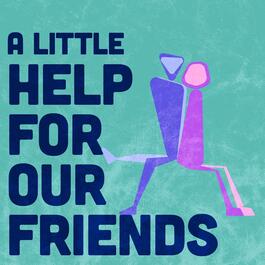
Your Brain on Extremes: How All-or-Nothing Thinking Affects Mental Health
Send us a text! (add your email to get a response) We all know those moments—when everything feels either perfect or disastrous, when someone is either completely trustworthy or utterly toxic. "All-or-nothing," "black-and-white," or dichotomous thinking, shapes our relationships, political views, and self-perception in profound ways. But where does this all-or-nothing approach come from, and why is it so hard to escape? In this episode, we dive deep into the surprising evolutionary purpose behind rigid thinking patterns. Far from simply being a cognitive flaw, black and white thinking often emerges as a survival mechanism for those who"ve experienced trauma or instability. The problem arises when we carry these protective patterns into everyday life, relationships, and social media interactions where complexity is essential. We explore how dichotomous thinking manifests differently across various conditions—from personality disorders where it permeates every interaction to PTSD where it might remain confined to specific triggers. We share personal examples, research findings, and practical strategies for recognizing when you"ve fallen into extreme thinking. Then, we outline the evidence-based strategies for breaking free of the extremes of dichotomous thinking. Whether you"re dealing with a loved one who sees the world in absolutes or noticing this pattern in yourself, we understand why our brains crave certainty and how embracing the gray areas might be the key to deeper connections and better mental health. We offer both compassion for why we develop these patterns and concrete tools for finding your way back to nuance. Resources:Bonfá‐Araujo, B., Oshio, A., & Hauck‐Filho, N. (2022). Seeing Things in Black‐and‐White: A Scoping Review on Dichotomous Thinking Style1. Japanese Psychological Research, 64(4), 461-472. Jonason, P. K., Oshio, A., Shimotsukasa, T., Mieda, T., Csathó, Á., & Sitnikova, M. (2018). Seeing the world in black or white: The Dark Triad traits and dichotomous thinking. Personality and Individual Differences, 120, 102-106. Support the showIf you have a loved one with mental or emotional problems, join KulaMind, our community and support platform. In KulaMind, work one on one with Dr. Kibby on learning how to set healthy boundaries, advocate for yourself, and support your loved one. *We only have a few spots left, so apply here if you"re interested. Follow @kulamind on Instagram for science-backed insights on staying sane while loving someone emotionally explosive. For more info about this podcast, check out: www.alittlehelpforourfriends.com Follow us on Instagram: @ALittleHelpForOurFriends
From "A Little Help For Our Friends"


Comments
Add comment Feedback